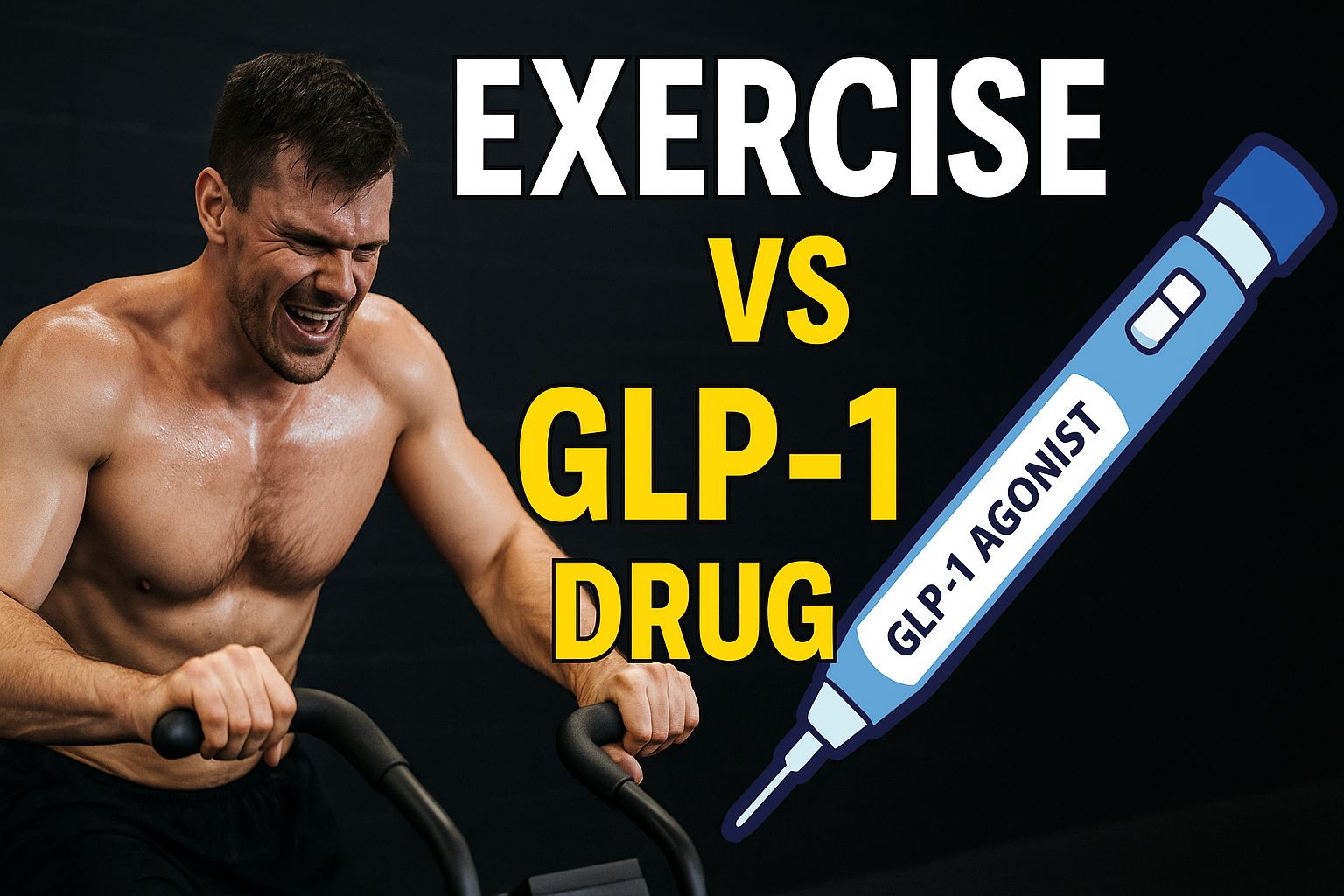GLP-1 drugs like semaglutide are everywhere right now. People are calling them the miracle fix for fat loss and blood sugar. They copy a natural hormone your gut already makes after you eat. That hormone tells your brain “I’m full,” slows your digestion, helps control insulin, and leaves you eating less. Sounds like magic in a pen.
But here’s the reality. Your body already has a way of spiking GLP-1 without dropping hundreds a month on a prescription. It’s called training hard.
One proper grafting session, I’m talking an hour of real work not some half-arsed stroll, can send your GLP-1 levels shooting up. Appetite drops, blood sugar stabilises, and your system gets a taste of the same metabolic shift people are queuing up for in pharmacies.
Here’s where the comparison stops. Drugs keep GLP-1 switched on constantly, but all they do is blunt hunger and help blood sugar. Training doesn’t just spike GLP-1 for a few hours, it also builds lungs, muscle, endurance, mitochondria, resilience, and rewires your entire metabolism. That’s something no injection will ever touch.
Do it consistently and your body even gets more sensitive to GLP-1. That means you need less hormone to get the same satiety and glucose control. Which explains why fit people often have sharper hunger signals and tighter blood sugar management without even thinking about it.
So yeah, exercise can mimic a GLP-1 drug in the short term. But it also delivers a thousand benefits those meds will never give you. That one hour of hard work on the mats, on the bike, or under the bar isn’t just like taking semaglutide. It’s a complete system upgrade.
Train hard. Perform better. Recover smarter. The medicine is already inside you.


Share:
Creatine and Brain Health: The Untold Benefits for the Brain and Depression
Jungle Powder Winter Tonic ❄️🔥